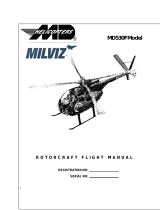
Instructions for Continued Airworthiness 190-01190-11 Rev. 1
for G500H in Robinson R44 Series Rotorcraft Page 12 of 20
Alert Text Cause Solution
DSCRT CONFIG – Discrete
output configuration error.
A discrete output required by an
interfaced system has not been
configured.
Use the DISCRETE CONFIGURATION
page in the SYS page group to configure
the discrete outputs to match the
installation.
Verify wiring to the discrete
FAN 1 FAIL Fan 1 has reported 0 RPM when it
was powered with a PWM duty
cycle higher than or equal to 10%
Inspect the GDU fan for an obstruction.
Contact Garmin Technical Support.
FAN 2 FAIL Fan 2 has reported 0 RPM when it
was powered with a PWM duty
cycle higher than or equal to 10%
Inspect the GDU fan for an obstruction.
Contact Garmin Technical Support.
GDC CONFIG The GDC configuration information
stored in the GDC
configuration module do not match.
With the GDU 620 in configuration mode,
go to the GDC page in the GDL page
group. Verify that the SET and ACTIVE
configuration settings are the same. If
not, use the SET>ACTV soft key to copy
the configuration settings from the GDU
620 into the GDC.
GDL69 GDL 69 has failed Verify wiring between the GDU and the
GDL 69
Check power and ground wires on GDL
69
GDL69 CONFIG The GDL 69 configuration
information stored in the GDL 69
and the GDU 620 configuration
module do not match.
With the GDU 620 in configuration mode,
go to the GDL 69 page in the GDL page
group. Verify that the SET and ACTIVE
configuration settings are the same. If
not, use the SET>ACTV soft key to copy
the configuration settings from the GDU
620 into the GDL 69.
The GDL 69 configuration was
updated using another LRU
(e.g. the GMX 200 or 400W/500W).
Update the GDL 69 configuration using
the GDU 620.
GDU CONFIG This error appears whenever the
GDU is replaced with a GDU that
was configured for a different
installation.
Cycle power to the GDU. This error
automatically clears on the second power
up with a different configuration module.
Error in the configuration of the
GDU 620.
GDU (1/2) COOLING Specific GDU has poor cooling, and
power usage is being reduced.
Ensure fans on indicated GDU are
functioning
Ensure fans on indicated GDU are not
obstructed
GDU (1/2) DB ERR Error in specific database, where
GDU (1/2) DB denotes specific
database.
Load the correct databse
GDU KEYSTK GDU <KEY> key is stuck. The
GDU has detected the <KEY> key
as stuck, where <KEY> denotes a
specific key.





















